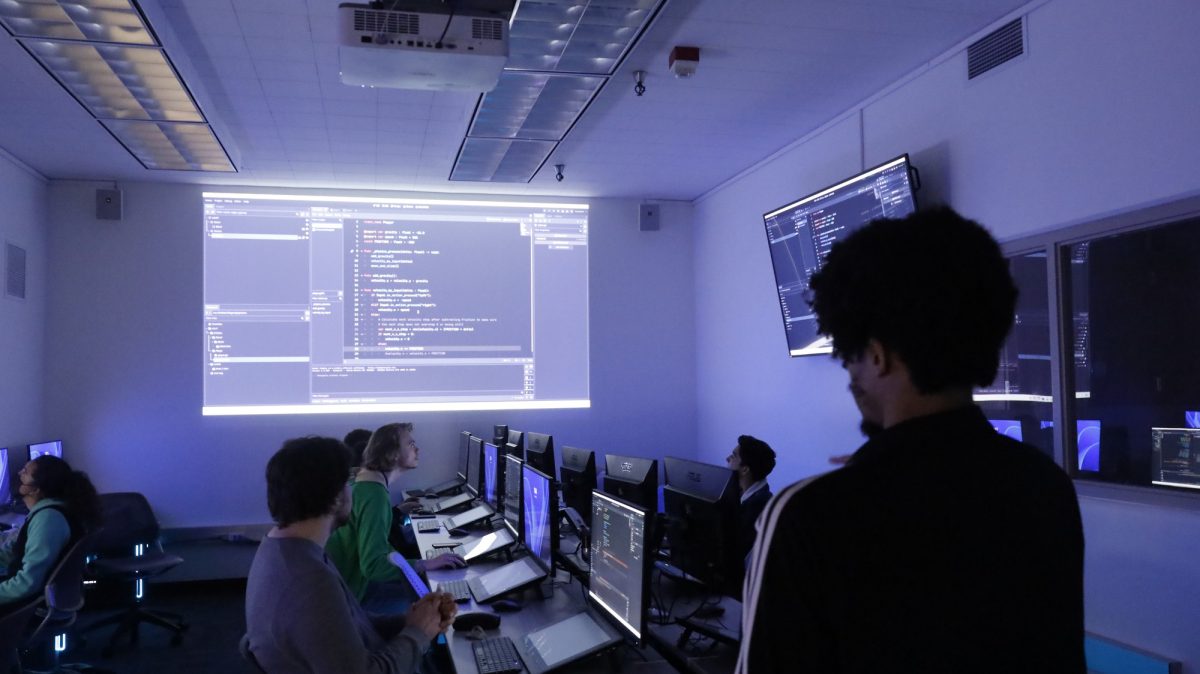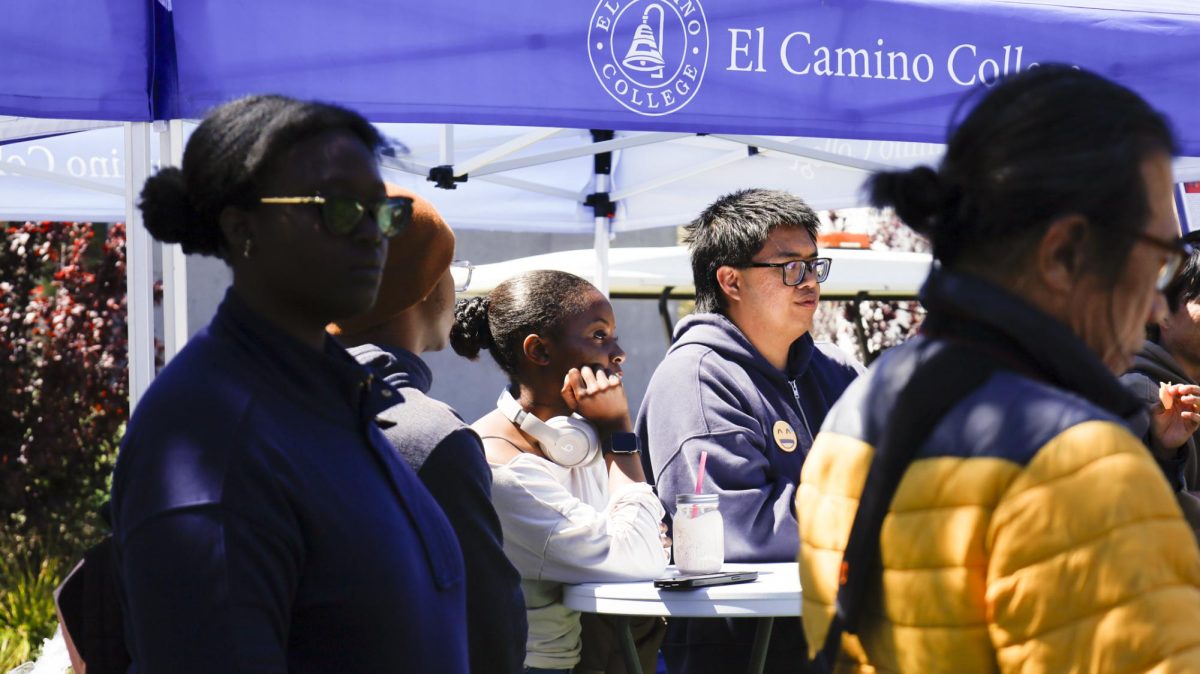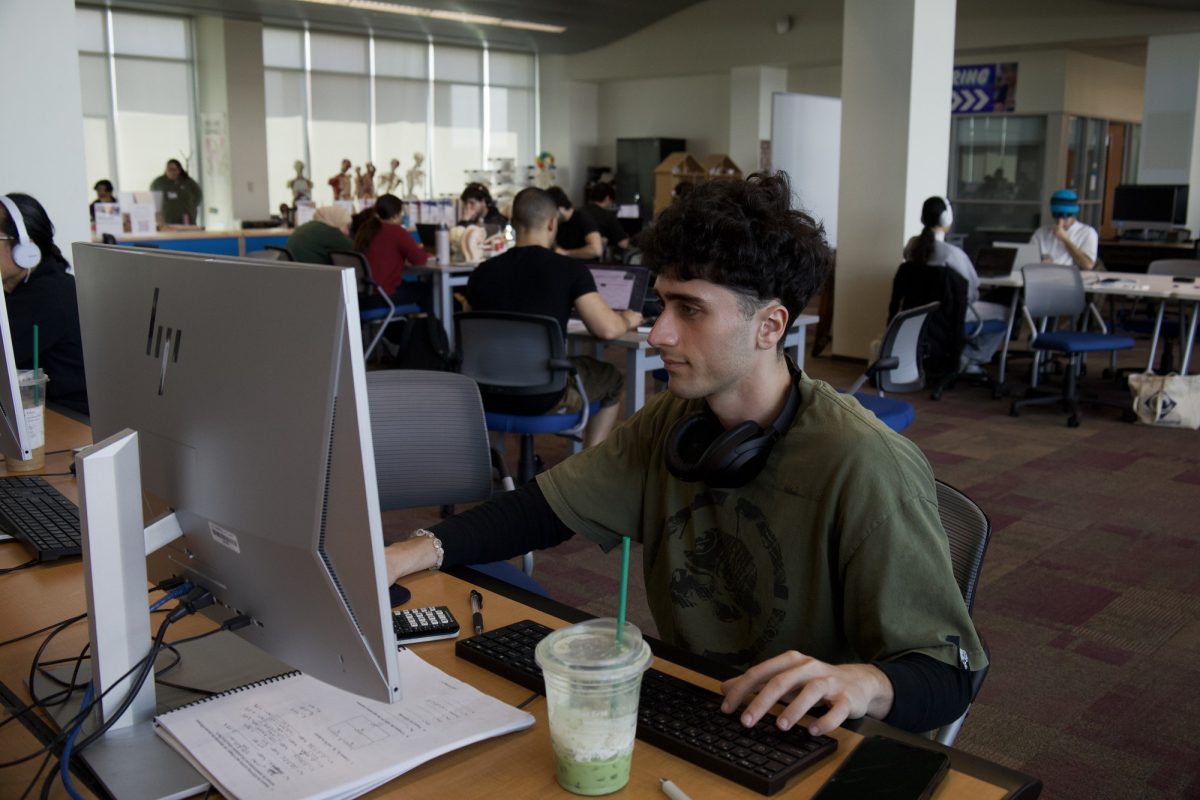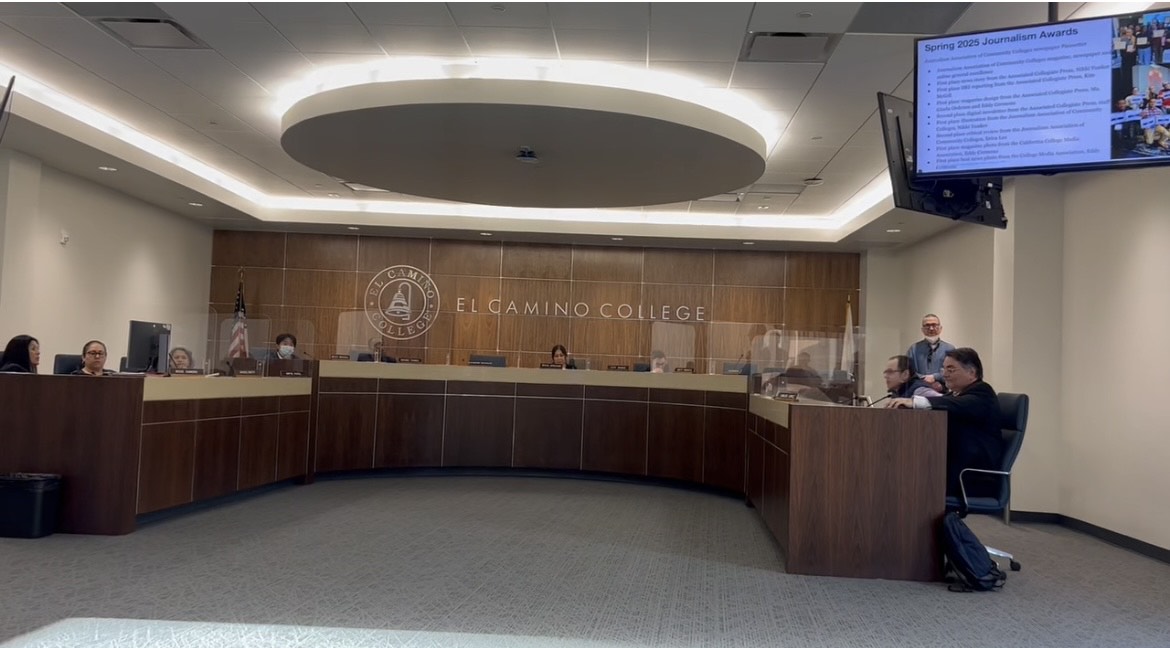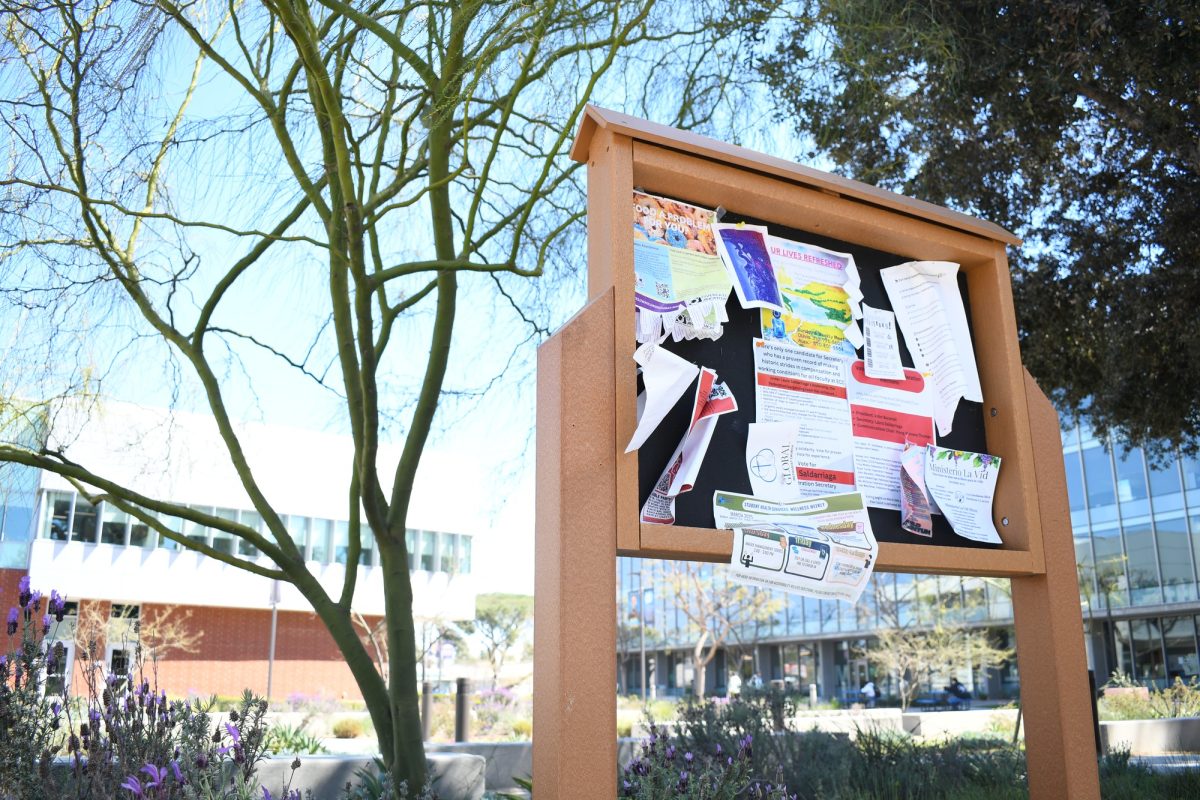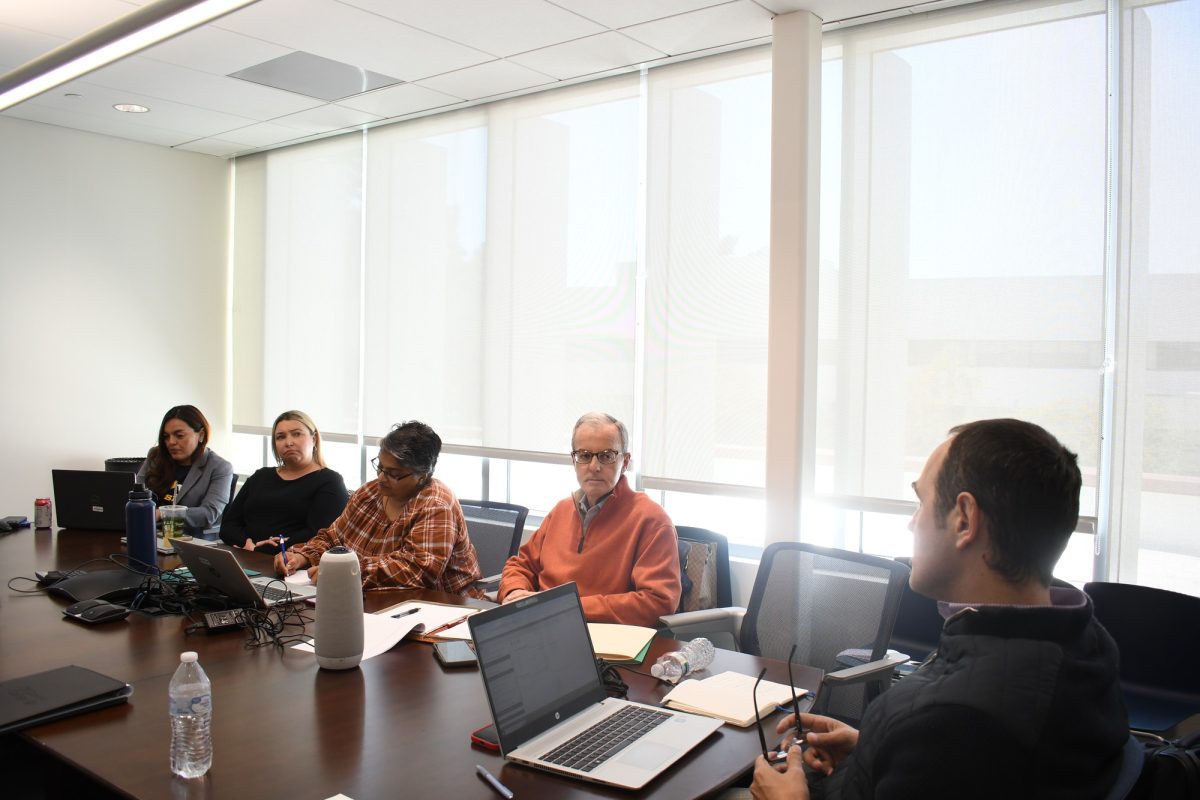They are hard to miss when walking past them, their blue hue and towering stature make their presence known to those on the El Camino College campus.
The Blue Poles at El Camino serve as a testament to changing times and as a reminder of the importance of safety.
There are several types of emergency phones located at El Camino: Cisco phones mounted to walls inside buildings, beige office phones located in the Humanities Building, two types of wall-mounted emergency phones located outside buildings and in parking lots, and the distinguishable Blue Poles.
“I think that people when they walk on campus, I think in my opinion, that when they see these Blue Poles there’s a feeling of ‘Hey I feel a little safe you know I can go to one of these things if there’s an emergency situation,’” El Camino Police Department Chief Michael Trevis said.
Trevis said that the emergency phones on campus are rarely used and even less for emergencies. When they are used, it’s by people who are looking for directions on campus or by people who have mobility issues and need a shuttle for transportation.
Emergency phones are stationary and need to be connected to a power source unlike smartphones, which can be used anytime anywhere so long as you have a signal. Calling 911 on a smartphone while on campus will direct the call to ECPD’s station for most cell phone carriers, Trevis said.
Due to recent construction interfering with their ability to operate, several Blue Poles at El Camino were disabled, including units at parking Lot L and F.
El Camino’s Administration has budgeted for the replacement of cables providing camera and phone functions to the Blue Poles in parking Lot L under Fund 41.
Fund 41 is the tentative budget for the capital outlay project.
Trevis said the ECPD has been in contact with the construction company which plans to repair the severed connections of the Blue Poles so they can be used again.
The Blue Poles on campus are not standardized, some are newer, fitted with cameras or lack them, while others have modernized cameras.
“Ours have been upgraded recently with speakers on the top, loudspeakers, they were just upgraded a few years ago for that, all of our phones, Blue Poles used to be analog…the technology has changed, the housing is still the same, the exterior of the pole is still the same… all the technical stuff has been upgraded,” Trevis said.
Construction interferes with Blue Poles’ ability to operate and their lack of standardization is not exclusive to El Camino.
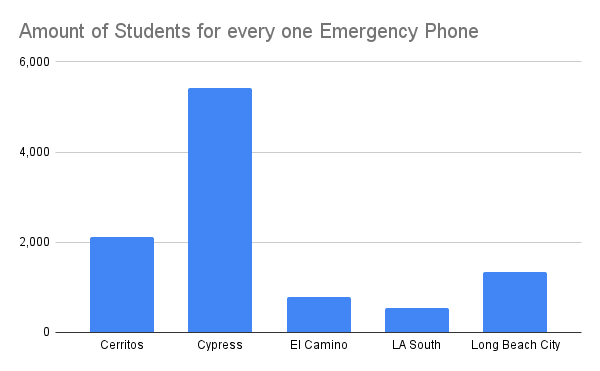
“In my experience, [emergency phones] really haven’t been used but I would say phones are good to have in case of an emergency,” Ryan Rouzan, a team lead of Los Angeles Southwest College Sheriff’s Office Deputy, said.
Rouzan said during his four years at LASC most of the calls coming to the police station on campus were from smartphones and has rarely seen the emergency phones be used to call for help or report a crime.
Several phones at LASC are out of service for the same reason the poles at El Camino are because of construction happening on the campus disrupting the Blue Poles’ ability to operate.
Some Blue Poles that weren’t labeled as being out of service had issues when being used to contact the Sheriff’s Office.
Stephanie Ornelas, a security officer from the LA County Sheriff Department, said issues with the Blue Poles could be attributed to lack of service and them being hard to work on.
“It offers a sense of safety and security to have these Blue Phones around, but since cell phones have come along in the last 20 plus years, Blue Phones are [kind of] this thing that it’s nice to have because it offers a physical presence but at the same time the usage is just really [redundant] because most folks have a cell phone these days,” Safety and Emergency Preparedness Manager for Los Angeles Community College District, Adam Saurin said.
Saurin said an audit had been done recently to phones across the LACCD to assess their functionality in addition to their effectiveness and usage.
The LACCD is looking at how to better place phones strategically on campuses so they can be more effective.
“Let’s say you have two projects that are taking place,… what if both those projects the developers said ‘We need to have a Blue Phone just right outside the building,’ well those projects are not talking to one another because they’re being managed maybe by different people then the finished project is you got two Blue Phones maybe a few feet from each other,” Saurin said.
While this case has not happened specifically at any LACCD campuses, Saurin said it is something that has been seen before at other campuses and the LACCD is working on improving the current Blue Poles on campus so that they can remain in service.
LACCD, like El Camino, also uses the emergency alert system Nixle, owned by parent company Everbridge, to send out digital alerts regarding things happening on campuses.
Each campus has their own alert system that students and staff can sign up for on their smartphones.
Both El Camino and LACCD have no plans to get rid of the emergency phones on their campuses and will keep improving them with upgrades such as modern parts to keep them in service and in synergy with other safety services like Nixle.
“There’s a safety factor going up and pushing that button, it is one button you don’t have to fumble to try to find it… even if you have [the police department] saved in your cell phone as your favorites,” Thomasson Marketing Group Inc Regional Sales Manager for Southern California, Nick Sunderman said.
Thomasson Marketing Group, is a California-based marketing agency in Ontario, which is the local resource for the Code Blue Corporation, the manufacturer of the Blue Poles and other emergency phones in Southern California.
“Most importantly when that button is pushed the operators at the other end or security, know exactly where that location is, if you’re on your cell phone they have no idea where you are,” Sunderman said.
Sunderman explained that the advantage of having emergency phones on campus is that it gives people the option of only having to push a button rather than the speed at which they can operate their phone in an emergency.
“People like choices and I think the Blue Pole just offers our campus community another choice to contact us,” Trevis said.




